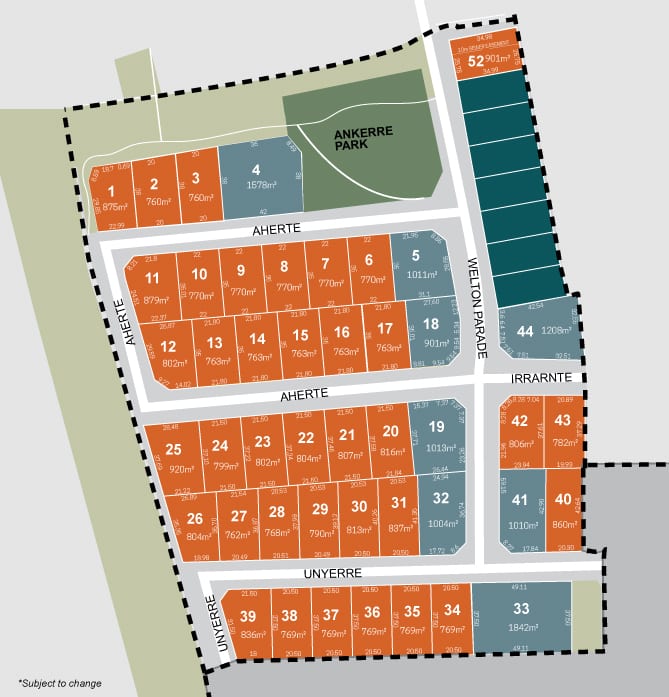Street names
Kilgariff Estate is located in Alice Springs amongst the beautiful MacDonnell Ranges. The Aboriginal Arrente people are the traditional custodians of Alice Springs and surrounding region.
In keeping with the Aboriginal culture and in consultation with Arrente people, we have embraced indigenous words for use as street names for Stage 2 and future stages.
Street names for the Coolibah Release will include indigenous Arrente animal words. More detail on these words and their pronunciation can be considered below.
The new park for Stage 2 has been named Ankerre Park. The meaning for this word is Coolibah; this word was used as the release name.
Ankerre is a Coolibah tree (also known as Coolabah). These trees can be found in the Coolibah Swamp, a culturally significant place for Central Australian Arremte people, located at, Stott Terrace, Alice Springs NT.[1]

Ankerre Park (ahrn–gkurr–rah) (Stage 2 park)
pronounced an-car-ah
Ankerre is a Coolibah tree (also known as Coolabah). These trees can be found in the Coolibah Swamp, a culturally significant place for Central Australian Arrente people, located at, Stott Terrace, Alice Springs NT.[1]
They have rough bark on part or all of the trunk while smooth powdery cream to pink bark above. They are a Eucalyptus
The word Coolibah was also adopted for as the release name for the first land release in Stage 2.
For more information in the meaning Ankerre check out these resources.
Aherte Crescent (ahr-hurt-ah)
Pronounced ah-ha-ta
Aherte means Bilby, a rabbit eared bandicoot. Aherte are now extinct in Arrente country. They were an important food source, and the tail was used for ornamental purposes by men and women.[2]
Unyerre Crescent (oon–yeah–rrah)
Pronounced we-near-ah
Unyerre is also known as Thonry devil. Unyerre can be seen sunning themselves in some areas of the desert in Central Australia and Western Australia. They are day-active ant-eating reptiles that can grow up to 20cm long, and can live 20 years. They can change colour to blend into their surrounds, appearing mostly grey, red, orange or yellow.[3]
Irrarnte Street (ear–rarnd-ah)
Pronounced ear-rant
Irrarnte means black cockatoo. In Aboriginal dreaming stories, the black cockatoo is said to represent spirit-strengthening change.
The black cockatoo’s are known for their cries, and their cries tend to herald significant changes in Indigenous mythologies, including the bringing or coming of necessary rain.[4]
[1] https://wildlife.lowecol.com.au/wp-content/uploads/sites/25/Central-Australia-13.pdf
[2] https://www.indigemoji.com.au/indigemoji/Aherte
[3] https://www.bushheritage.org.au/species/thorny-devils
[4] http://www.wildspeak.com/animalenergies/blackcockatoo.html
[1] https://wildlife.lowecol.com.au/wp-content/uploads/sites/25/Central-Australia-13.pdf
